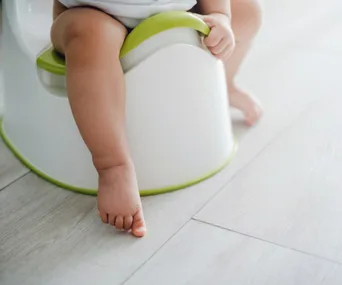Has your home been turned into a princess castle or dragon’s lair?
Don’t be surprised if your tenacious toddler is spending more and more time in the world of make-believe as their imagination kicks into high gear between the ages of two and three.
Actively encouraging a fertile imagination can really open your child’s mind to a bigger world – it’s as easy as listening and taking part in games (when invited, of course) to keep up with what they’re thinking about.
Other ways to spark imagination are reading books, sharing made-up stories, art appreciation (have them explain what they’ve created), limiting screen time, and encouraging pretend play.

The toddler years can be a whole new world of imagination! (Image: Getty)
This is an age when imitative play evolves into creative play thanks to their ability to think abstractly – ie. that box is a spaceship, the tea towel’s a parachute!
Apart from entertaining them (and you), imagination-building games benefit kids in many ways including improving vocab, giving them a chance to control situations, problem solving and learning social rules.
WATCH: Things you can’t do when you’re NOT a toddler. Continues after video …
Of course the down side of a healthy imagination can be the emergence of fears and phobias about what lurks behind the door or under the bed at night, among other concerns.
Imaginary friends can be a good coping mechanism as experts believe this is sometimes a way that creative kids manage fears and stress – studies show almost half of all kids have an imaginary friend for a time.
It’s important to remember that fear is a vital form of self-preservation – a child without fear is far more vulnerable than one who fears nothing. To help them overcome fears and stop their progression into phobias, it’s important to acknowledge a fear without reinforcing or justifying it.
Allow them to regress a little as they may be struggling to separate real danger from imagined, be on hand for lots of cuddles until they are ready to assert independence again, see if there was a trigger event for the fear.

.png?resize=380%2C285)

.png?resize=380%2C285)